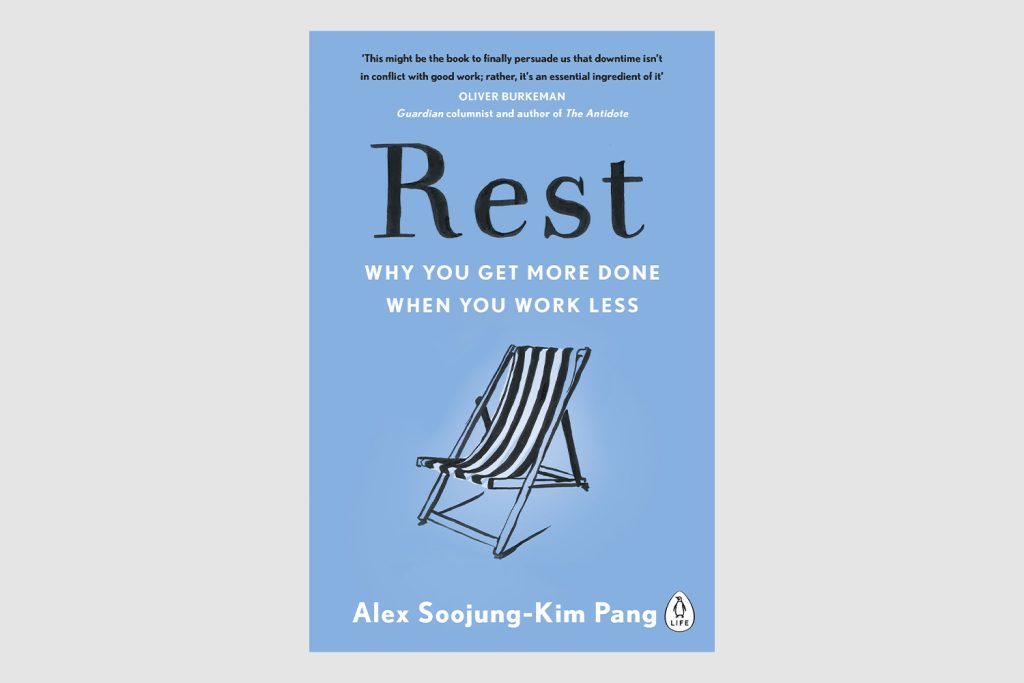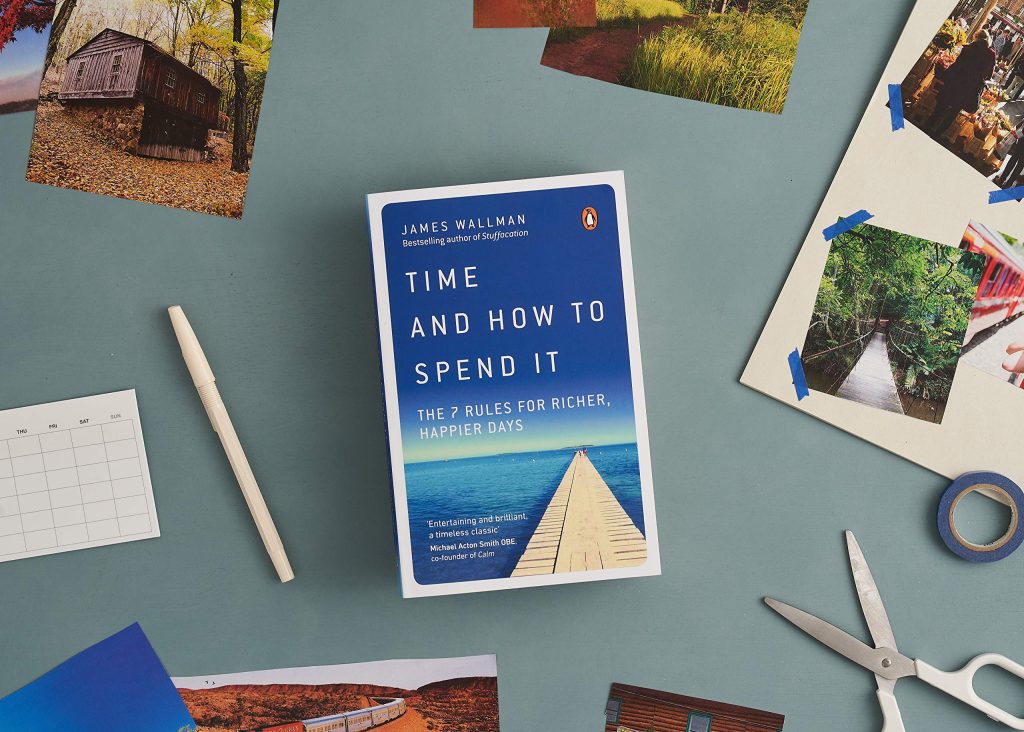Ever since Richard Easterlin made the shocking discovery that rising GDP wasn’t making people happier, people have been trying to figure out why. Why on earth was more money not making people happier?
A decade of studies by pscyhologists eventually uncovered the answer.
Turned out, the problem wasn’t so much the amount of money we have, it’s how we spend our money that matters. The solution, they found, was to spend less on stuff, and more on experiences—because experiences are more likely to make us happy, successful.
The Greatest Question… Of Our Era And Our Lives?
So now there was a new question, and a shift in the intellectual zeitgeist. Once researchers had discovered that experiences are more likely to make us happy, the question evolved to:
“What type of experiences make us happier?”
Another way of asking that:
“How should I spend my time in order to be happier?”
(By ‘happier’, I mean holistically: more success, better relationships, more enjoyable life.)
In the 2000s and the early 2010s, scientists focused on figuring out how we should spend our money, so they spent the late 2010s and they’re spending the 2020s figuring out how we should spend our time.
And, just as there was a trend in authors sharing ways to to get away from stuff and focus on experiences instead – from Marie Kondo‘s The Life-Changing Magic of Tidying to Joshua Becker‘s The More Of Less, and my Stuffocation – so there’s a trend today of books about how to spend time.
Here’s five of them, in order of when they were published.
1. Rest by Alex Soojungkim-Pang (Basic, 2016)

Rather than working ourselves to the bone for little reward, Silicon Valley consultant Pang argues that we’re actually more productive when we work smarter rather than harder and factor in time for rest. He believes if we take more time off and spend our free time wisely, we’ll perform better in and outside of work as a result.
Take rest seriously. Time off is strongly associated with feelings of guilt, which can be assuaged if people are reminded of the benefits of down time to our performance at work. Researchers at Columbia, Harvard and Georgetown universities have found that a ‘functional alibi’ can be helpful when it comes to taking time off, as we’re more likely to enjoy a leisure activity if it can improve our productivity at work.
Rest isn’t passive, it’s active. Rather than being something we enjoy passively, Soojung-Kim Pang argues that rest is active, and a physically and mentally engaging skill that we can hone like an athlete trying to improve their lap time or singer perfecting their scales. Smokers are given a creative advantage at work, as going for cigarette breaks gives them valuable free time to turn over ideas in their mind. How might we design the equivalent of the cigarette break into experiences that provide similar creative benefits to attendees?
Dive into “deep play”. As adults it’s easy to view playtime as something childish and unnecessary, but Soojung-Kim Pang believes we should all be making more time for “deep play” in our lives. Similar to flow, and borrowing from Cal Newport’s idea of “deep work”, deep play is an intensely dramatic and engrossing high stakes form of play where the elements are taken to transcendent new heights.
You can find more insights from Pang in our Campfire report The Transformative Power Of Time Well Designed. He’ll also return to the Campfire on Wednesday 2 November to argue for the 4-day week – and what a 3-day weekend might mean for experience designers when people have more hours to fill…
2. Time Smart by Ashley Whillans (Harvard Business School, 2020)

Do you ever feel like you have too much to do and not enough time to get it all done?
Yeah, you’re not alone.
As Ashley Whillans reports in Time Smart, that’s how four out of five adults say they feel (er, hello, who are the other lucky 20%? If this is you, let me know!).
The problem – for these people and the rest of us too – is that being time-poor means you’re less healthy, less productive, and more likely to divorce.
Although this is written as a time management guide for individuals, I think there are several insights that could also be applied to designing experiences at scale.
“Time confetti” makes people feel time poor. Even though we have more leisure time than ever, we feel like we have less. The reason is that we’re being pulled in so many directions, both by technology and the unnecessary pressure we put on ourselves to look busy and exert control over our inboxes. So we try to multitask to get more done. this is a problem known as ‘contaminated time’, which is deeply unsatisfying.
It’s made worse by a problem identified by Bridget Schulte, author of Overwhelmed, as “time confetti”, all those seconds and minutes you lose every day to unproductive multitasking.
So the challenge for each of us in our lives, and for experience designers: How might we create spaces free from the distractions of technology and “busyness”?
Put a concrete value on our hours. We feel a great amount of pain over small financial losses, but not over small time losses – but using our time wisely is empirically proven to make us happier.
We should think about how the decisions we make, from where we live to how long our commute is, will impact the amount of free time we have, and consider paying for services that will create more of it (for example, spending about $150 per month on house cleaning produces a happiness equivalent of making $40,000 more per year).
(This makes me think of Joe Pine’s concept of “the Money Value of Time”, and why experience designers should be putting a price tag on their experiences to avoid the race to the bottom.)
Boundaries are critical. Whillan argues that building in time for psychological transitions between roles – for example, from home to work – helps us to delineate between our personal and professional selves.
This echoes the concept of “crossing the threshold” and creating liminal spaces for people to transition in and out of our experiences in order to make them feel safe, comfortable and ready to be transformed. How might we design clear thresholds between roles?
Some people with a fascinating ideas here includ Annette Mees – who talks about ‘taking the stairs’ rather than crossing a threshold, because in truth people require a few steps to move from one role to another; and Kevin Dulle, whose ‘Personae of Place’ framework is brilliant; and Dart Lindsley’s radical, emerging concept of the patterns of workplace experiences, inspired by the seminal work A Pattern Language.
3. Time And How To Spend It by James Wallman (Penguin, 2019)

Is it OK to include my own book here? Bah, I’ve done it now.
The book – and the research behind it – led to the WXO. I tried to distill the insights from science into a seven-point checklist that would help people avoid ‘junk food’ experiences and choose ‘superfood’ experiences instead.
The STORIES checklist. I think of the STORIES checklist as a meta-checklist, a group of seven ‘opportunity areas’ that, if you follow them, will lead to a much better use of time. They stand for: Story, Transformation, Outside & Offline, Relationships, Intensity, Extraordinary, and Status & Significance.
Although in the book the list is designed to help people spend their time better, you can flip that round and use it to design better time – aka experiences – for others. For example, does your experience have enough Intensity, or flow, to draw people in? Have you considered that Status is really important to help people decide? And have you designed in Significance – which is about doing for others, eg kindness – because giving people a chance to do something for others makes them feel really good?
Use DARG FUNC to make flow. Based on Mihalyi Csikszntmihalyi’s work, and also others like neuroscientist Herbert Benson and flow specialist Steven Kotler, DARG FUNC stands for: Delete Distractions, Active, Risk, Goals, and Feedback, Unpredictable, New, and Complex. Designing the shape of your experience to include all of the above will guarantee it’s a worthy trade for people’s precious time.
So many pointless experiences, so little time. There are people who just want to keep us all watching, clicking, spending, hooked, mindless. If we can raise the level of “experience intelligence” by establishing the benchmark for a good experience – something the WXO is continuing to work on with our ongoing certification project – we can help people make good choices and keep engaged in useful experiences that build their resilience and happiness.
4. Happier Hour by Cassie Mogilner Holmes (Gallery Books, 2022)

Holmes is a Professor of Marketing and Behavioral Decision Making at UCLA Anderson School of Management. When her fairytale wedding turned into a car crash and shattered her perceived definition of happiness, she decided to dedicate her career to finding out what makes us truly happy.
“I wanted more time, but not just time to get more done. I wanted more so I could slow down to experience the hours,” she writes. “When looking at my life, I wanted to feel happy and not only see a blur.”
Her empirically based insights and practical toolkits for designing your own time provide some useful insights into how to design others’, too.
Happiness is a choice It requires conscious, deliberate effort to identify the activities, people and places that make us happy – and those that don’t. The book involves completing several spreadsheets and schedules in order to build a happier life. In the same way, how can we help people avoid “experience-washing” and choosing experiences that don’t make them happy, which can be trickier than it looks?
Happiness hacks… because we often make bad decisions. We might hate exercise, but it generally boosts our happiness, especially if it’s Outside and Offline. Holmes suggests a “temptation bundling hack”, where you might only allow yourself to listen to your favourite podcast on a run. To liven up a dull commute, you might use the time to call a friend. When it comes to dreaded everyday tasks, how might we use our experience design skills to “hack” them and turn them into positive experiences that are better for our wellbeing?
The 5 Whys of happiness. To identify what really makes us happy, Holmes advocates asking “the five whys” of any experience that makes us happy. By doing this, we’re more likely to discover the underlying, and repeatable, patterns of activities, people, places that make us happy. When we have this answer, we have the raw material we need to design truly transformative experiences.
Holmes will be delving deeper into Happier Hour in a Campfire talk on Wednesday 30 November 2022. To join, apply to become a WXO Member here.
5. Four Thousand Weeks by Oliver Burkeman (Penguin, 2021)

In this bestselling book newspaper columnist Burkeman introduces tools for constructing a meaningful life based on embracing rather than denying our limitations. Drawing on the insights of both ancient and contemporary philosophers, psychologists, and spiritual teachers, he sets out to realign our relationship with time – and in doing so, to liberate us from its tyranny.
Forget FOMO, it’s time to settle. FOMO is an unavoidable consequence of being alive. Every choice we make blocks off another path we could have taken. However, rather than seeing this as limiting, we should see it as liberating – rather than wasting time pursuing the perfect job, partner or activity, we can start enjoying the potential happiness of the path we have chosen today. So how might the process of making those decisions actually be made enjoyable, rather than debilitating – and how can we nudge people towards making them?
Pure productivity is a myth. Despite having been a “productivity columnist” for The Guardian newspaper, Burkeman realised that none of the many plans for achieving perfect productivity ever worked. Our existence is predicated on the concept of “finitude”: “any finite life — even the best one you could possibly imagine — is therefore a matter of ceaselessly waving goodbye to possibility.” We can either distract ourselves from this fact by trying to control our time, or allow for flexibility.
Done is better than perfect. As creators, we often put off starting a project – or never get there – because we worry we can’t live up to the ideals in our imagination. However, realising that perfection is impossible allows us to just begin. As Burkeman says, “judged by the flawless standards of your imagination, you definitely won’t do a good enough job. So you might as well make a start.”
These last two points remind me of something Alex Soojung-Kim Pang said in a recent Campfire:
“Perfection is for amateurs.”
Less junk, more ‘superfood’ experiences
Whether your focus is the hour, the days, the weeks, your own time or someone else’s time — isn’t it great that we live at a time when brilliant people are figuring out how we can spend the most precious finite resource we have even better?
And then, by sharing these ideas, via instituations like the WXO, we can get more experience designers to use these insights, and create experinces more likely to be a really good use of people’s time. The result, I hope, will be less junk food experiences, more ‘superfood’ experiences instead.






